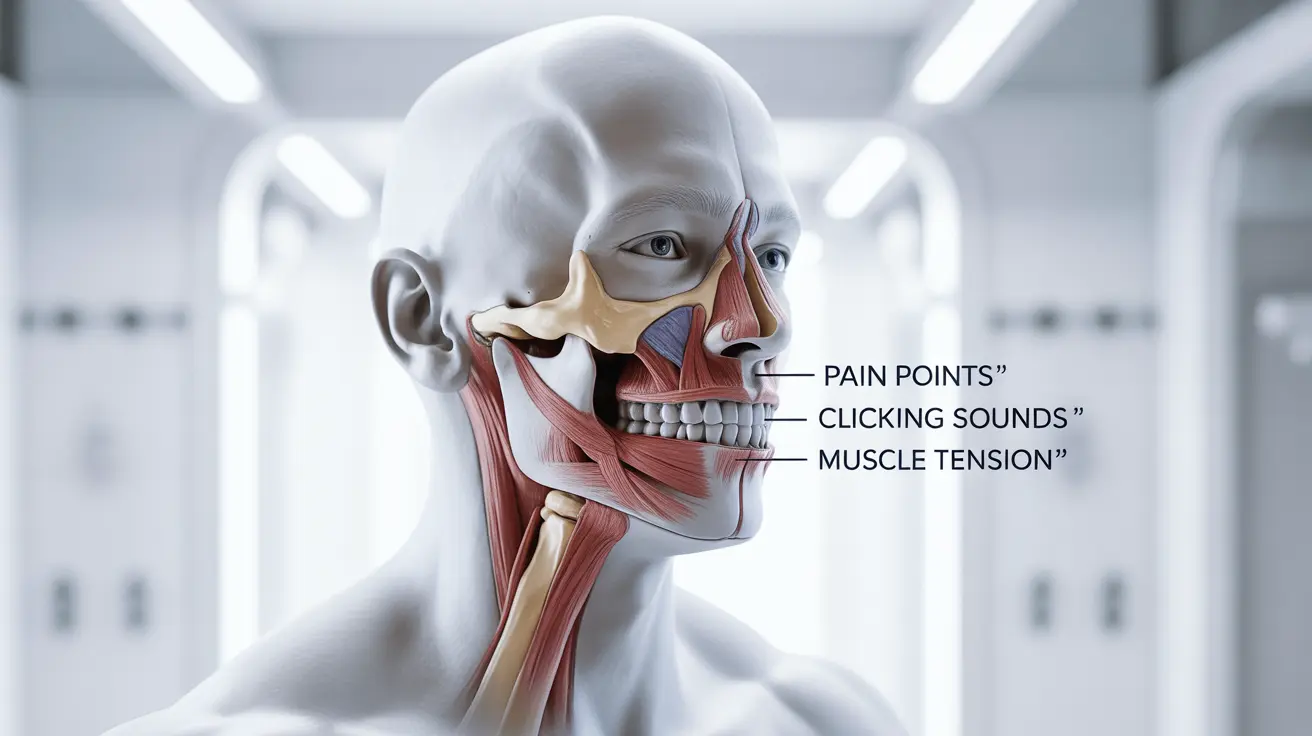TMJ headaches can significantly impact your daily life, causing discomfort and affecting your overall well-being. These headaches, stemming from temporomandibular joint (TMJ) dysfunction, often present unique symptoms and require specific approaches for effective management. Understanding the nature of TMJ headaches is crucial for proper diagnosis and treatment.
In this comprehensive guide, we'll explore the distinctive characteristics of TMJ headaches, their causes, and various treatment options to help you better manage this condition. We'll also discuss prevention strategies and lifestyle modifications that can reduce the frequency and severity of these headaches.
Understanding TMJ Headache Symptoms
TMJ headaches typically present with several characteristic symptoms that distinguish them from other types of headaches:
- Pain or tenderness in the jaw area
- Aching pain around the ears
- Facial pain that worsens when chewing
- Clicking or popping sounds when opening the mouth
- Limited jaw movement or locking
- Muscle tension in the face and neck
The pain often starts near the jaw joint and can radiate to the temples, face, and neck. Unlike typical tension headaches, TMJ headaches frequently involve jaw-related symptoms that can help in identification.
Distinguishing TMJ Headaches from Migraines
While TMJ headaches and migraines can share some similarities, several key differences can help in differentiation:
TMJ Headache Characteristics
- Jaw pain and tenderness
- Pain typically worse with jaw movement
- Usually bilateral (affects both sides)
- Often improves with jaw rest
Migraine Characteristics
- Often unilateral (one-sided)
- Sensitivity to light and sound
- Possible nausea and vomiting
- May include visual auras
Treatment Approaches for TMJ Headaches
Several effective treatment options are available for managing TMJ headaches:
Conservative Treatments
- Gentle jaw exercises
- Hot and cold therapy
- Stress management techniques
- Soft food diet
Medical Interventions
- Physical therapy
- Custom-fitted mouth guards
- Pain medication
- Muscle relaxants
The Role of Stress and Anxiety
Stress and anxiety can significantly contribute to TMJ headaches through various mechanisms:
- Increased muscle tension
- Teeth grinding (bruxism)
- Poor sleep quality
- Altered eating habits
Managing stress through relaxation techniques, counseling, or meditation can help reduce the frequency and severity of TMJ headaches.
Prevention Strategies
Preventing TMJ headaches involves several key approaches:
- Maintaining good posture
- Avoiding excessive jaw movements
- Using proper ergonomics when working
- Regular stress management
- Practicing gentle jaw exercises
- Avoiding hard or chewy foods
Frequently Asked Questions
What are the main symptoms of a TMJ headache?
TMJ headaches typically present with jaw pain, facial tenderness, temple pain, and discomfort that worsens with jaw movement. You may also experience clicking or popping sounds when opening your mouth, and the pain often extends to the neck and shoulders.
How do you differentiate between TMJ headaches and migraines?
TMJ headaches usually involve jaw-specific symptoms like tenderness and clicking sounds, while migraines typically include sensitivity to light and sound, possible nausea, and visual disturbances. TMJ pain is often directly related to jaw movement and tends to be bilateral.
What are the most effective treatments for TMJ headaches?
Effective treatments include a combination of conservative approaches like jaw exercises, stress management, and lifestyle modifications, along with medical interventions such as mouth guards and physical therapy when necessary. Hot and cold therapy can also provide relief.
Can TMJ headaches be caused by stress or anxiety?
Yes, stress and anxiety can significantly contribute to TMJ headaches by causing muscle tension, teeth grinding, and altered jaw habits. These factors can increase pressure on the temporomandibular joint and surrounding muscles.
How can I prevent TMJ headaches from occurring?
Prevention strategies include maintaining good posture, practicing stress management techniques, avoiding hard or chewy foods, using proper ergonomics, and performing gentle jaw exercises. Regular dental check-ups and addressing any underlying teeth grinding issues are also important.




